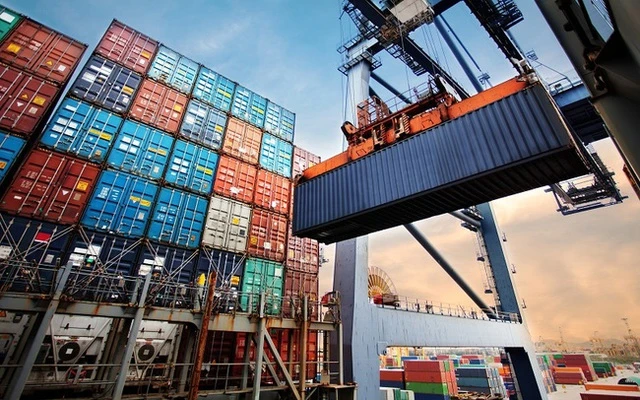
Restoration of Orders Expected
Concluding 2023, the wood and wood products industry fell short of expectations, generating USD 13.37 billion—USD 3 billion below the initially set target for the year. The significant drop in consumer demand in key markets like the US and EU resulted in a shortage of orders, particularly in the initial two quarters of the year. Despite these challenges, signs of recovery emerged in the final months of 2023, prompting the entire industry to establish an export goal of USD 17.5 billion for 2024.
Of particular note, the US market constitutes over half of the total export turnover for wood, with expectations of a gradual and robust recovery. This optimism stems from the cooling down of inflation in the US, an uptick in employment, especially within the construction and real estate sectors, which signals a potential resurgence in wooden furniture exports to the US market.
Importantly, US buyers continue to regard Vietnam as a vital supply source, particularly as the US seeks to diversify its supply chain. The positive growth potential of Vietnamese wood products in the world's largest consumer market for wooden furniture is evident. Concurrently, various other industry sectors share this optimism, including shrimp exports. Despite a 15% decline in shrimp exports to the US in 2023 compared to the previous period, the US remains the largest market for Vietnamese shrimp, with a total turnover of USD 682 million.
Shrimp exports to the United States are expected to witness a slight increase in 2024, according to insights from Ms. Kim Thu, a shrimp market expert affiliated with the Vietnam Association of Seafood Exporters and Producers. This growth is anticipated as food demand improves, inflation cools, and retail sales in the US undergo recovery. Similarly, the garment industry shares a belief in the revival of the US market, setting a turnover target of USD 44 billion for 2024, matching the industry's highest export turnover in 2022. The Vietnam Textile and Apparel Association evaluates that the economic situation in major textile import markets, including the US, is exhibiting signs of recovery, increasing the likelihood of improved demand for textiles and garments.
The latest report from the General Statistics Office reveals that, as of January 2024, the US stands as Vietnam's largest export market, with an estimated turnover of USD 9.6 billion. The trade surplus has reached USD 8.2 billion, showcasing a notable 57.6% increase compared to the same period last year. Providing additional insight at a trade promotion conference with Vietnamese trade agencies abroad on January 31, Mr. Đỗ Ngọc Hưng, Trade Counselor and head of the Vietnam Trade Office in the US, highlighted that the US is set to hold a presidential election in 2025, suggesting that trade policy is unlikely to undergo significant changes in 2024.
Exercise Caution Amidst Emerging Challenges
When discussing trade defense barriers in the US, the shrimp industry is encountering notable challenges. Ms. Kim Thu, an expert in the shrimp market, disclosed that the American Shrimp Processing Association (ASPA) has recently submitted a request to initiate an investigation into anti-subsidy taxes on imported shrimp, including those from Vietnam. While the ultimate outcome remains uncertain, it is anticipated that Vietnamese shrimp exports to the US will be adversely impacted in the first half of 2024.
Additionally, escalating tensions in the Red Sea are leading to increased shipping rates to the US, posing an additional hurdle for businesses currently engaged in exports to the US. Presently, some businesses adopt the Free On Board (FOB) method, where the seller bears full responsibility until the goods are delivered to the ship at the specified time and place outlined in the contract. This approach shields them from the direct impact of rising shipping rates. However, in the long run, if the situation in the Red Sea persists, the repercussions are likely to be inevitable. As each step in the value chain incurs additional costs, the end buyer of the product or service will have to allocate more resources. This, in turn, results in reduced competitiveness for goods and adversely affects the market share of businesses.
Vietnamese exporters are confronted not only with trade remedies and immediate challenges arising from tensions in the Red Sea but also with the growing stringency of regulations imposed by the United States. Notably, the wood and wood products industry must meticulously observe the US legal environment, which mandates that imported wood products adhere to standards concerning environmental protection, safety, revenue, and fair trade. Vietnamese wood export businesses must proactively comply with these legal wood regulations and swiftly adapt to emerging requirements.
For 2024, the Ministry of Industry and Trade has set an ambitious target of achieving 6% export growth, equivalent to USD 377 billion. While this goal poses a considerable challenge, a solid foundation exists for its accomplishment through steadfastly retaining key markets and venturing into new ones. With the US market presenting both opportunities and challenges, the Commercial Counselor and Head of the Vietnam Trade Office in the US advise local management agencies, businesses, and industries to stay vigilant and stay informed about the situation, political fluctuations, and US policies that impact trade with Vietnam. This will enable timely responses to potential issues.
Moreover, promoting product diversification to reduce dependence is deemed crucial. A methodical and appropriate approach to market penetration will allow Vietnamese goods to leverage competitive advantages and enhance their presence in these markets. Supporting businesses in participating in fairs and export promotion activities in the US is identified as a crucial strategy to foster success in these endeavors.




















